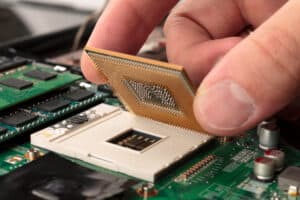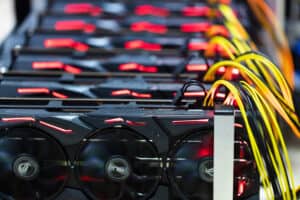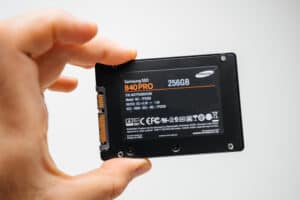
If you often play on your computer, we’re sure you’ve experienced some sort of stuttering, blurred pictures, and even FPS dropping. In some cases, even upgrading the graphics card might not have solved the issue, and the next thing you know, you’re dead and have lost the game. As it turns out, you might be experiencing all these problems because of a CPU bottleneck. So how do you fix a CPU bottleneck?
You can fix a CPU bottleneck by overclocking it, reducing the quality of some game settings, killing background processes or programs you don’t need, increasing the game resolution, and upgrading your CPU.
In this article, we take a closer look at a CPU bottleneck, what causes it, and how you can fix it.
What is a CPU Bottleneck?
A CPU bottleneck takes place when the CPU is unable to process a large amount of incoming data in a short time period, especially when playing high-end games. Since the CPU is the computer’s ” brain, ” it is responsible for carrying out numerous processes and commands simultaneously. So if the CPU is not able to process the data in time sent by the GPU while you’re playing a game, it results in a CPU bottleneck.
The CPU’s job is to process real-time game audio, UI, physics, logic, AI processing, actions, and other similar CPU-bound tasks. But the capped speed of data transfer results in a bottleneck.
Most gamers usually blame the graphics when they face problems in their gameplay, but in most cases, a CPU bottleneck is the one responsible in most cases. A powerful CPU is more important than a high-end graphics card.
What Causes a CPU Bottleneck?
Many problems can result in a CPU bottleneck. Here are the most common ones:
Reason #1: CPU Overheating
An overheating CPU tends to slow down so that it isn’t damaged. As a result, it doesn’t perform as well, which can eventually cause a CPU bottleneck. Your CPU can overheat for a number of reasons such as insufficient ventilation, poor or worn-out thermal paste, an inefficient CPU cooler, and a loose connection between the CPU cooler and the CPU.
Reason #2: Malware, Virus, & Bugs
In some cases, malicious programs and other malware and virus run in the background and increase CPU usage. As a result, your computer slows down, and even the smallest tasks put a lot of pressure on the CPU, often resulting in a bottleneck.
Other problems like game-related issues and buggy graphics drivers can also cause a bottleneck.
Reason #3: Demanding Graphics Settings
Some graphics settings in games tend to be more CPU intensive and use up a lot of CPU, especially if you’re using an old CPU. Of course, these settings differ from one game to another, since each game involves a different implementation. So there’s no way to know which graphics settings you need to change. But you can experiment to pinpoint the exact setting responsible for putting so much load on your CPU.
How To Fix CPU Bottleneck
There are multiple ways to fix a CPU bottleneck, including:
Method #1: CPU Overclocking
Overclocking the CPU will fix the problem to some extent, but it’s not a permanent fix. Plus, it’s not suitable for beginners either because something can easily go wrong if you haven’t done it before. In addition to that, how you overclock differs according to the CPU version, component, and brand. But overclocking the processor gives the CPU more room to breathe, which temporarily solves overclocking.
Method #2: Killing Other Processes
In your Task Manager, you will find a “Processes” tab that includes all the services currently running on your computer. Here, the first category is CPU, and you can see the applications or programs that take up the most CPU. Monitoring your CPU temperature and usage can give you an idea of the applications consuming the most CPU.
Once you know the processes responsible for the spike, you can disable those while you’re playing. This way, your CPU will focus solely on processing game-related data. If your CPU cannot handle the number of programs running while you’re playing, you will notice your FPS dropping because of your CPU overclocking.
Note
When it comes to multitasking, the number of cores and threads on your CPU is important. More cores are great for multitasking.
Method #3: Change Game Quality Settings
As mentioned before, the CPU handles all the tasks on your computer, so much so that it even processes the data or memory stored to load the graphics or assets in a game. However, you can cut down your CPU usage by reducing the quality of rendering-related settings, like view distances, MSAA, and textures. If graphics aren’t important for your game, you can set them on the lowest setting to prevent a CPU bottleneck.
Method #4: Look Out for CPU Overheating
As mentioned before, an overheating CPU slows down to prevent further damage to the CPU, leading to a bottleneck. So, if your CPU is overheating, check the thermal paste. If that’s fine, the problem could be the CPU cooler. It’s better to ensure that all the settings are correct and that sufficient airflow inside the PC. You can even turn up the fan if needed.
Method #5: Upgrade Your CPU
All the other methods are more or less temporary fixes, and after a little while, you will inevitably experience another bottleneck. With all the other methods, you’re just under-utilizing the GPU and RAM when playing so that your CPU keeps up. The best way to completely get rid of the problem is to upgrade your CPU.
Conclusion
Your games can lack and stutter because of a CPU bottleneck, and the best way to solve it is to solve the underlying problem. It could be because of an overheated CPU, malware, or demanding settings. And once you fix those settings, you’ll be able to avoid a bottleneck. But the best way to get rid of the problem for a long while is to upgrade your CPU!







